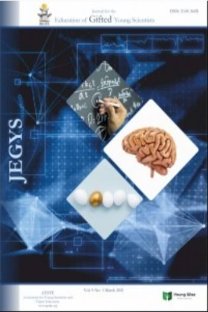Enhancing EFL students’ writing skills on English through Facebook and classroom collaborative activities
The aim of research was to find out the use of Facebook and classroom collaborative activities on students’ writing skill of Indonesian Senior High School Students. The researchers used quantitative method by applying quasi-experimental design. The study consisted of 40 students as respondents that were divided into control and experimental group. This is to see which group is effective to be used in helping the students’ writing ability. The first group was taught by using Facebook and the second group was given treatment by classroom collaborative activities. Both Facebook and collaborative activities help the students to have better writing performance. To collect data, the researchers manipulated English Writing Test (EWST), interview form, and observation check list. The data were analyzed through SPSS 18.0. The researchers found that the use of Facebook and classroom collaborative activities were significantly enhancing the EFL students’ writing skill. There were some responses on the students’ collective perception on classroom collaborative learning showing their interests to the use of classroom collaborative activities. The interaction occurred in Facebook among the EFL learners indicate that the media is effective to students’ writing skills on English language. This study also recommends teachers in order to motivate EFL learners to learn foreign languages so that they can start writing not from complicated matters but rather on students’ participation in sharing knowledge, developing peer networks in combining between theoretical knowledge and practice.
Keywords:
Collaborative Learning EFL students, Facebook, Writing skills,
___
- Almansour, N., & Alshorman, R. (2014). The Effect of an Extensive Program on the Writing Performance of Saudi EFL University Students. International Journal of Linguistics, 6, 247-264.
- Arikunto, S. (2010). Research Procedure: A Practical Approach. Jakarta: Rineka Cipta.
- Bower, M., & Richards, D. (2006). Collaborative Learning: Some Possibilities and limitations for Students and Teachers’. In Proceedings of the Conference for the Australasian Society for Computers in Learning in Tertiary Education (ASCILITE’06) ACM Transactions on Computing Education, 9. ACM Transactions on Computing Education, 9(1).79-89.
- Brown, H. (2000). Principles of Language Learning and Teaching 4th Edition. New York: Addison Wesley Longman Inc.
- Brown, H. (2004). Language Assessment: Principles and language Practices. New York: Pearson Education Inc.
- Brown, H. (2007). Principles of Language Learning and Teaching 5th Edition. New York: York: Longman.
- Brown, H., & Abeywickrama, P. (2010). Language Assessment: principles and Classroom Practices. San Francisco: Person Education.
- Hyland, K. 2003. Second Language Writing. New York: Cambridge University Press. Lee, A.Y. (2016). Media Education in the School 2.0 Era: Teaching Media Literacy Through Laptop, Computers, and iPads. Global Media China, 444.
- Majid, A. (2012). Blended Scaffolding Strategies Through Facebook to Aid Learning and Improving the Writing Process and Writing Performance. JIOSR Journal of Humanities and Social Science, 1(4),
- Merchant, G. (2013). Unraveling the Social Network: Theory and Research Learning, Media and Technology, 37(1), 4-19.
- Miles and Huberman (1994). Qualitative data analysis: An expanded sourcebook. (2nd ed.). London: Sage
- Presthus, W., & Vatne, D.M. (2019). A Survey on Facebook Users and Information Privacy. Procedia, Computer Science, 40.
- Ramadhani, P. (2018). Using Facebook Comment in Teaching Writing Skills. Proceeding of the ICEERS, Volume 1 no. 3 (2018) 253-264 (p.254). Sidoarjo, Indonesia: Wesley Publishing.
- Ron, C. (2008). A Course Book and Reference Guide. USA: Cambridge University Press.
- Ross, S.M., & Morisson, G.R. (2003). Experimental Research Methods. USA: Old Dominion University.
- Ruddell, M. (2005). Teaching Content Reading and Writing. NJ: John Wiley & Sons, Inc.
- Shukor, Shuhaida binti, Siti, Noordin, Nooreen. Effect of Facebook Collaborative Writing Groups on ESL Undergraduates Writing Performance. International Journal of English Language Education, 91.
- Spratt, M. (2005). The TKT Course. Cambridge: Cambridge University Press.
- Statista. (2017). Most Famous Social Network Sights Worldwide as of September 2017, Ranked by Number of Active Users (in millions). Retrieved from https://www.statista.com/statistics/272014/global-social-networks-ranked-by-number-of-user.
- Sugiyono. (2007). Statistic for Research. Bandung: CV. Alfabeta.
- Sugiyono. (2010). Educational Research Method (An Approach to Quantitative, Qualitative, and R&D). Bandung: Alfabeta.
- Suherman. E. (2001). Process of Evaluation and the Math Achievement. Jakarta: Open University.
- Suwantarathip, O. (2014). The Effects of Collaborative Writing Activity Using Google Docs on Students’ Writing Abilities. The Turkish Online Journal of Educational Technology.
- Syafrizal, S., Masrupi, M., & Mauludah, I. (2019). The Impact of Experiential Learning Method and Vocabulary Mastery Toward Indonesian Students Reading Comprehension Through Animation Video. Journal of the Education of Gifted Young Scientists. 46.
- Stortch, N. (2013). Collaborative Writing in L2 Classrooms. Great Britain: Short Run Press Ltd.
- Tahir, S. Z., & A, A. (2014). Improving Students' Writing Skill Through Facebook at University of Iqra Buru. Proceeding ICT for Language Learning 7th Edition (pp. 235-241). Tadulako: Tadulako University.
- Başlangıç: 2013
- Yayıncı: Genç Bilge Yayıncılık
Sayıdaki Diğer Makaleler
Leny HELIAWATI, Bibin RUBİNİ, Rudi FİRMAYANTO
İ Ketut BUDAYASA, Andi HUSNİATİ, Dwi JUNİATİ, Carol Le LANT
Nurul AİNİ, Dwi JUNIATI, Tatag SİSWONO
Ahmad ALZBOON, Mahmoud ABU JADOU
Lovy HERAYANTI, Wahono WİDODO, Endang SUSANTİNİ, Gunawan GUNAWAN
A. A. Ketut BUDİASTRA, Iwan WİCAKSONO, Nıa ERLİNA
Muhammad KHOLİD, Cholis SA'DIJAH, Erry HİDAYANTO, Hendro PERMADİ
Rorlinda YUSOF, Mariati MOKHTAR, Siti Nur Ain SULAİMAN, Syafrimen -, Mazliza MOHTAR
Yulıa Maftuhah HİDAYATİ, Abdul NGALİM, Sutama SUTAMA, Zainal ARİFİN, Zaenal ABİDİN, Eka RAHMAWATİ
